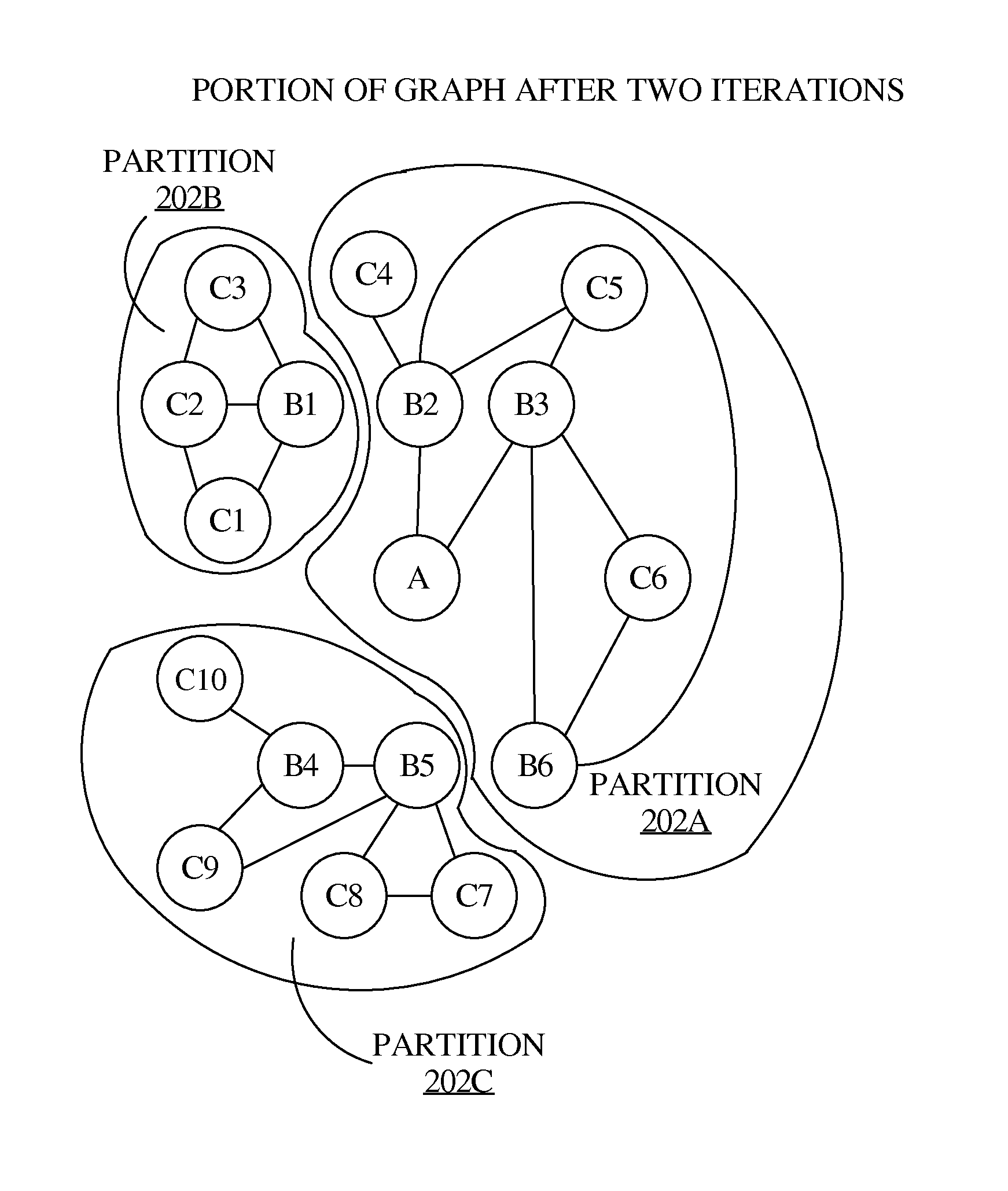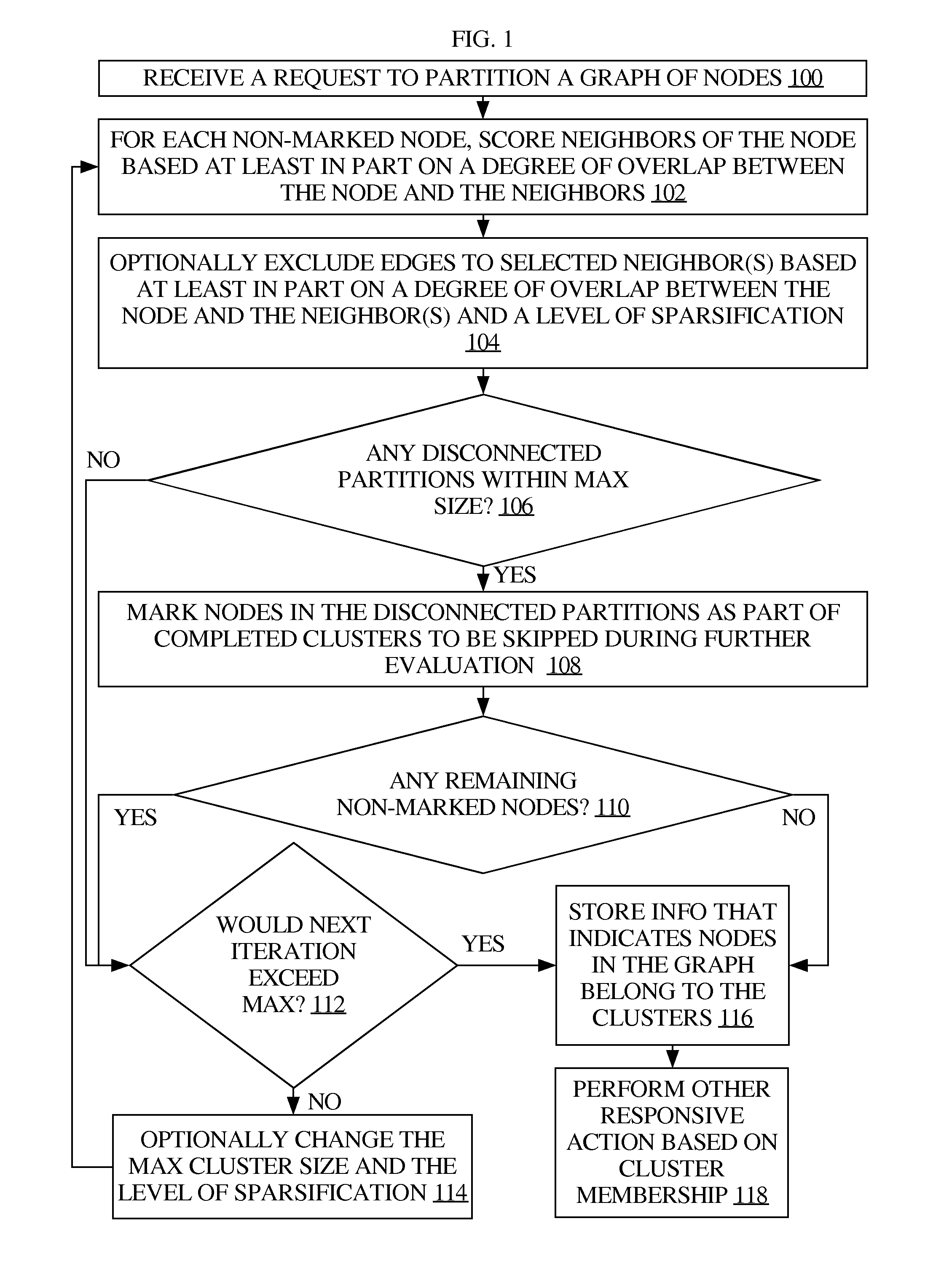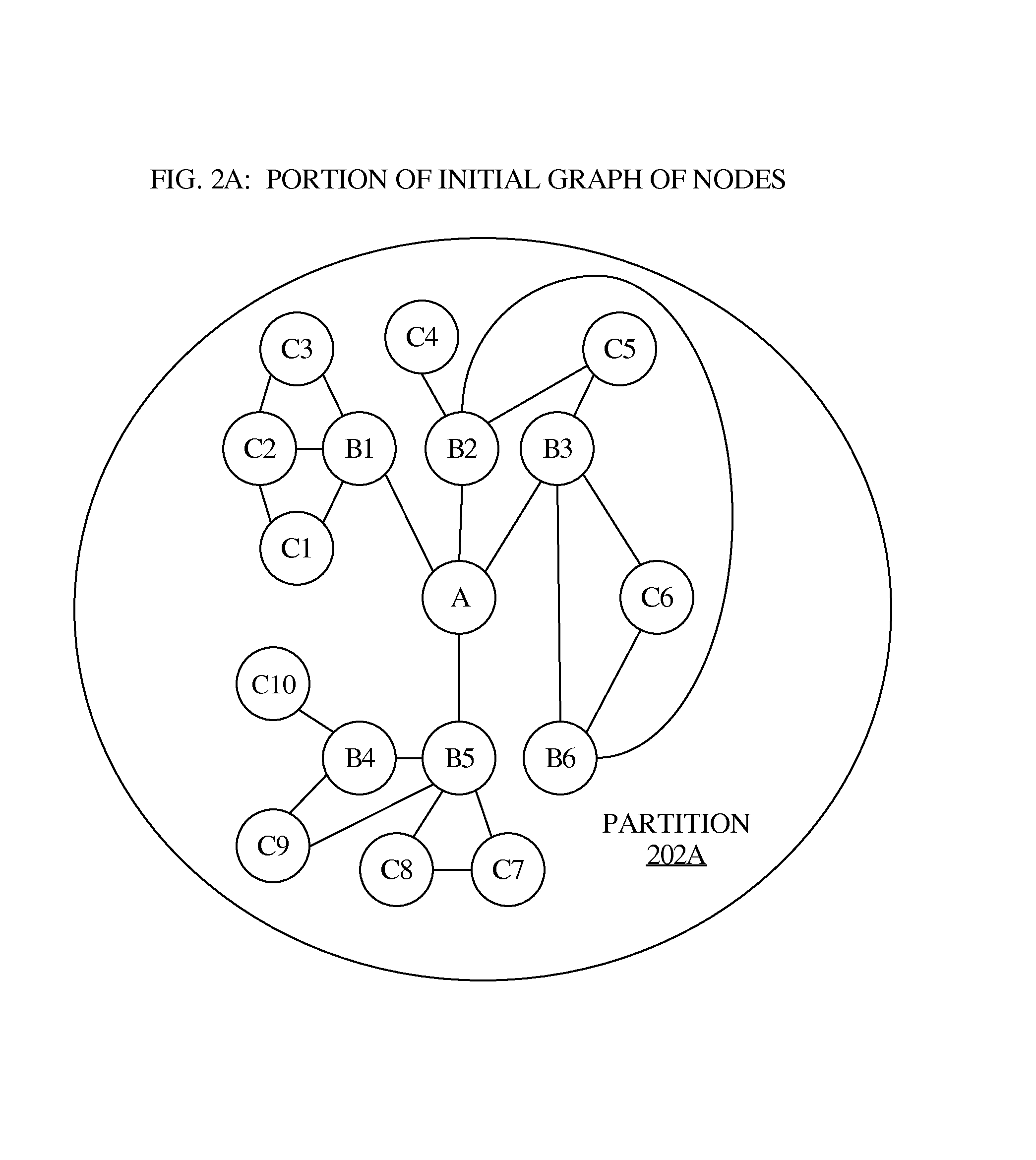Partitioning a graph by iteratively excluding edges
a graph and iterative exclusion technology, applied in the field of partitioning a graph of nodes, can solve the problems of not being able to achieve the effect of massive datasets, nodes and edges in this graph may be massive, and techniques are not practical for massive datasets
- Summary
- Abstract
- Description
- Claims
- Application Information
AI Technical Summary
Benefits of technology
Problems solved by technology
Method used
Image
Examples
Embodiment Construction
[0013]In the following description, for the purposes of explanation, numerous specific details are set forth in order to provide a thorough understanding of the present invention. It will be apparent, however, that the present invention may be practiced without these specific details. In other instances, well-known structures and devices are shown in block diagram form in order to avoid unnecessarily obscuring the present invention.
General Overview
[0014]Techniques are described herein for partitioning a graph of nodes into clusters of nodes by iteratively excluding edges. In one embodiment, a graph partitioning module, comprising special-purpose hardware and / or special-purpose software operating on computing device(s), partitions a graph into clusters by iteratively excluding edges from nodes in the graph. For each node of at least a subset of nodes in the graph, the graph partitioning module determines whether to exclude edges for the node and, if so, selects for exclusion or remov...
PUM
 Login to View More
Login to View More Abstract
Description
Claims
Application Information
 Login to View More
Login to View More - R&D
- Intellectual Property
- Life Sciences
- Materials
- Tech Scout
- Unparalleled Data Quality
- Higher Quality Content
- 60% Fewer Hallucinations
Browse by: Latest US Patents, China's latest patents, Technical Efficacy Thesaurus, Application Domain, Technology Topic, Popular Technical Reports.
© 2025 PatSnap. All rights reserved.Legal|Privacy policy|Modern Slavery Act Transparency Statement|Sitemap|About US| Contact US: help@patsnap.com



